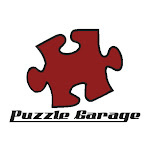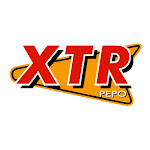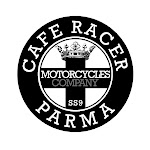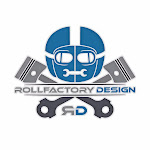Holographic Hammer inspired Ducati Panigale 899 Bobber
custom built with 3D printed parts
by Jorge Rodrigues in co-operation with Lab Motorcycle
custom built with 3D printed parts
by Jorge Rodrigues in co-operation with Lab Motorcycle
"After finishing my first bike project - says Jorge Rodrigues, the builder - I was wondering how it would be possible to build something visually more sophisticated, sportier and modern, without having to do as much outsourcing to external suppliers as I had to on my first bike. Having a computer engineering background, I decided to look at 3D printing as a possible solution for my issues (aka lack of skill and tools) with metal shaping for bodywork. At about the same time I bought a Ducati Panigale 899 that I found very hard to ride due to the sporty riding position, so I decided to convert it into a project bike. Looking around, I found inspiration on Holographic Hammer’s Panigale Café Racer drawings, and I decided that would be the inspiration for my new project. Bike: a streetfighter Ducati Panigale with classic looks and a “bobber” seat. Holographic Hammer’s Panigale has very clean lines and I wanted to keep that. However, reality is not a drawing and I had to compromise on the side fairing that contain all the electronics by converting them into side air intakes".
"Since the Panigale is an incredible bike from a mechanical perspective, I have decided to leave engine, brakes and suspensions alone. I chose to get a set of Kineo spoke wheels, a Roland Sands design headlight, a Rizoma front fairing, replace the top triple clamp and clip-ons for a more upright riding position. I then started looking for what parts I would need to design for 3D printing and those were:
- Front air intake that doubles as headlight holder
- Front fairing holder
- Adapter for the Monza gas tank cap
- The complete rear, including internal headlight and blinker support
- 3D printed Ducati logo for the tank
- Various supports and brackets
I then embarked in the adventure of purchasing a 3D printer that was compatible with the structural requirements of the parts. I finally ended up choosing a Markforged Onyx One for the small stuff with strong structural requirements and a Raise3D N2 Plus for its huge print volume. I have to say both behaved very well and the fact that 3D printing allows for quick prototyping I was able to quickly perform a number of prototype iterations for each part till I reached the desired shape and function. Most parts required six/seven design iterations each, and once finished they can be sanded and painted as any other plastic part. This gave me total freedom to define and shape the design while keeping everything in-house (in my garage in this case..). Main downsides are that you need to learn how to do Computer Aided Design (CAD) – I used a free software called Sketchup and how to 3D print using the right materials for each job.
On the front-end the air-intake required a design didn’t push the headlight too high, while keeping the air intake function and also be used as a bracket for the headlight and blinkers. I have left this component unpainted (directly from the printer) to hightlight the 3D printed nature of the bike. On the rear side, I wanted to keep it as simple and streamlined as possible and therefore I designed a rear end that incorporates the tail-light and blinkers and merges with the cut frame and the saddle type seat. The new driving position is far more comfortable than the original one, with the help of the lowered footpegs from LSL.
As an example, the front air intake is printed in polycarbonate (good mechanical strength) and most of the other parts are either ABS or CF reinforced Nylon (Markforged Onyx).
Another challenge with the Panigale was electronics and cable routing. I spent ages checking how to reroute and accommodate all the wires and brake lines so that very few would be visible on the final bike. Battery and horn (now under the seat) location were also a nightmare, even after replacing the original battery by a much smaller Lithium battery. I finally found a placement below the front cylinder and the final packaging looks great and keeps the necessary accessibility for maintenance.
Another challenging component were the Kineo wheels. Kineo had never done wheels for the 899 Panigale and I had to perform the factory measurements for the wheel fittings. This was not without risk, but in the end Kineo did an outstanding job (with the help of Bruno Saturno that sold me the wheels) and they are a perfect fit.
Riding the bike is a complete blast. The dry weight came down 10Kg and the bike feels very light. The driving position is much better than the original Panigale and everything works as on the original bike. The front fairing actually gives some wind protection, but this is a bike for the corners and not the highway, acceleration is very strong, but the “peaky” nature of the 899 engine makes low speed driving not so enjoyable. This and suspension setup is where I have to work a little to make the bike more enjoyable.
Thanks to Pedro Bacalhau from Lab Motorcycles for all the advice on design decisions and with the paint job". Jorge Rodrigues

































No comments:
Post a Comment
Unsigned comments and comments containing links will be removed.
I commenti non firmati e quelli che contengono links saranno rimossi.